What Is Polyculture In Gardening
Family Food Garden may collect a share of sales or other compensation from the links on this page.
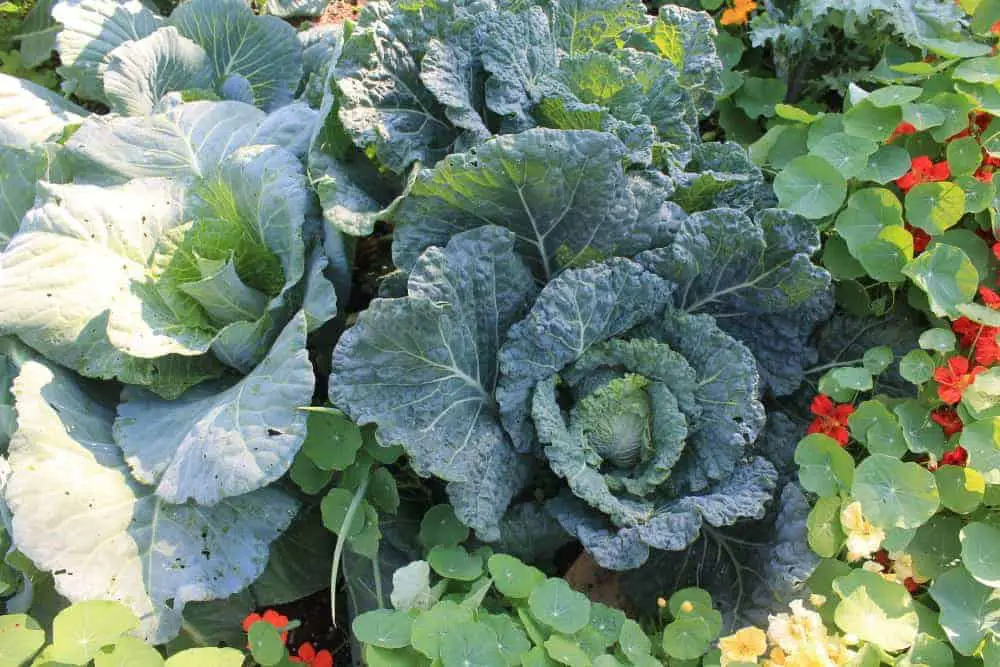
Polyculture permaculture gardening is fantastic
Natures design is quite amazing and in perfect chaos.It creates life cycling systems with all sorts of creatures, plants, layers, and patterns.The pattern we see in most gardens are tidy neat rows or crops grown in large blocks.
Polyculture is gardening that tries to imitate nature.
The goal is to create many layers in height, no uniformity with the distances between plants, and many different varieties existing together in one place. And just like nature, some plants excel and grow larger than the ones beside it.
The difference is your little plants next to your larger ones are vegetables not weeds!
This post will cover:
- Polyculture garden examples
- Pros and cons of polyculture
- Whether polyculture garden beds will work for you
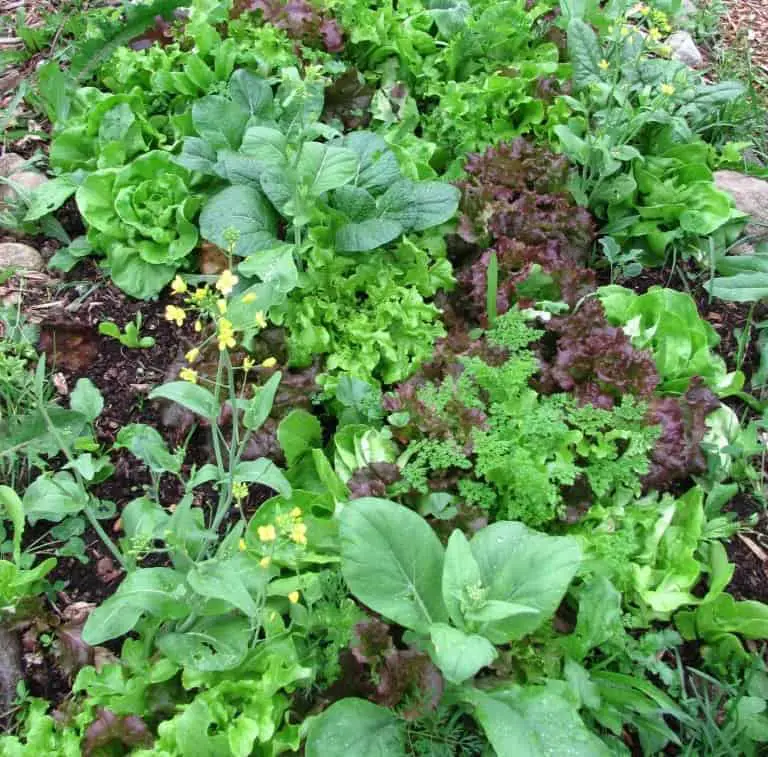
Benefits to Polyculture
Permaculture Gardening
What if I told you could reduce weeding, create a little ecosystem with your vegetables and deter pests?
That's what polyculture aims to do.
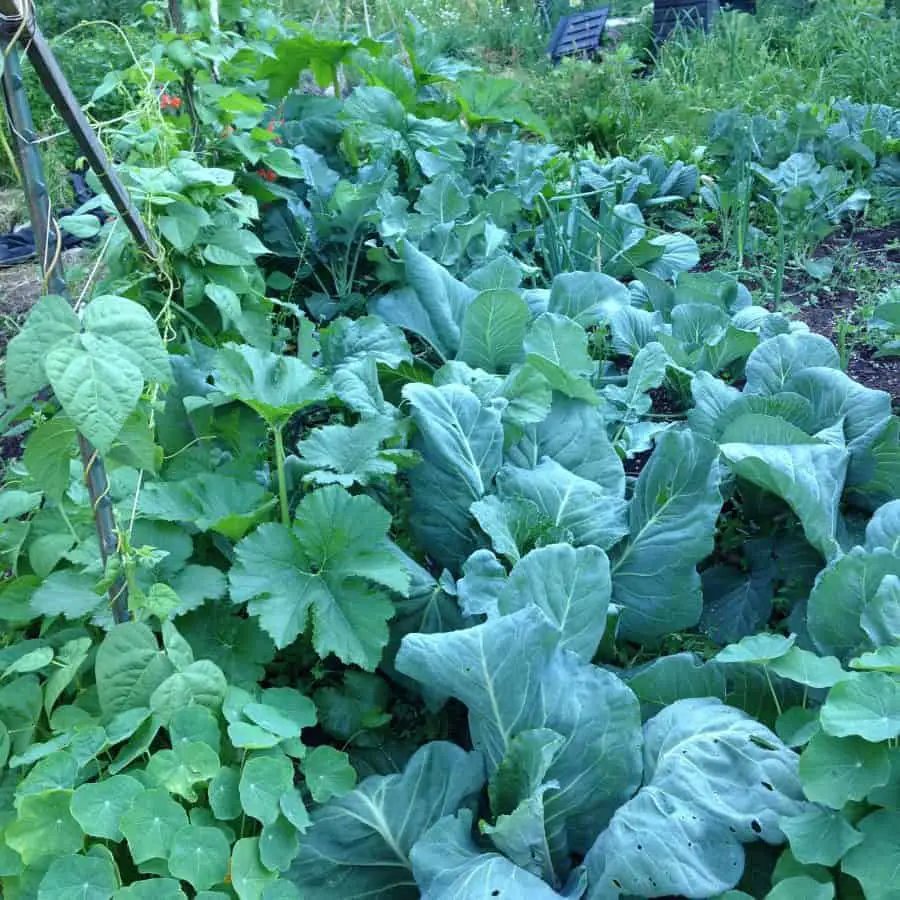
Polyculture is a form of permaculture that shifts from our current monoculture way of growing our food.
Visualize a garden bed full of vegetables all over the place, masses of colour and different textures instead of traditional rows. I first read about it in Gaia's Garden Guide to Homescale Permaculture.
It can help to reduce weeding by filling in the gaps where weeds would thrive with fast-growing crops that you can harvest within a few weeks. I would consider polyculture gardening a more intricate version of successional sowing.
It also involves companion planting and attracting beneficial insects which help to deter pests (think alliums and herbs). I've noticed that the slightly greater proximity of the plants does help to mask more smells to deter pests.
Some vegetables have a deep root system while others have a swallow one, by mixing different vegetables within a bed you can maximize the growing area.
Let's take a look at some Polyculture examples
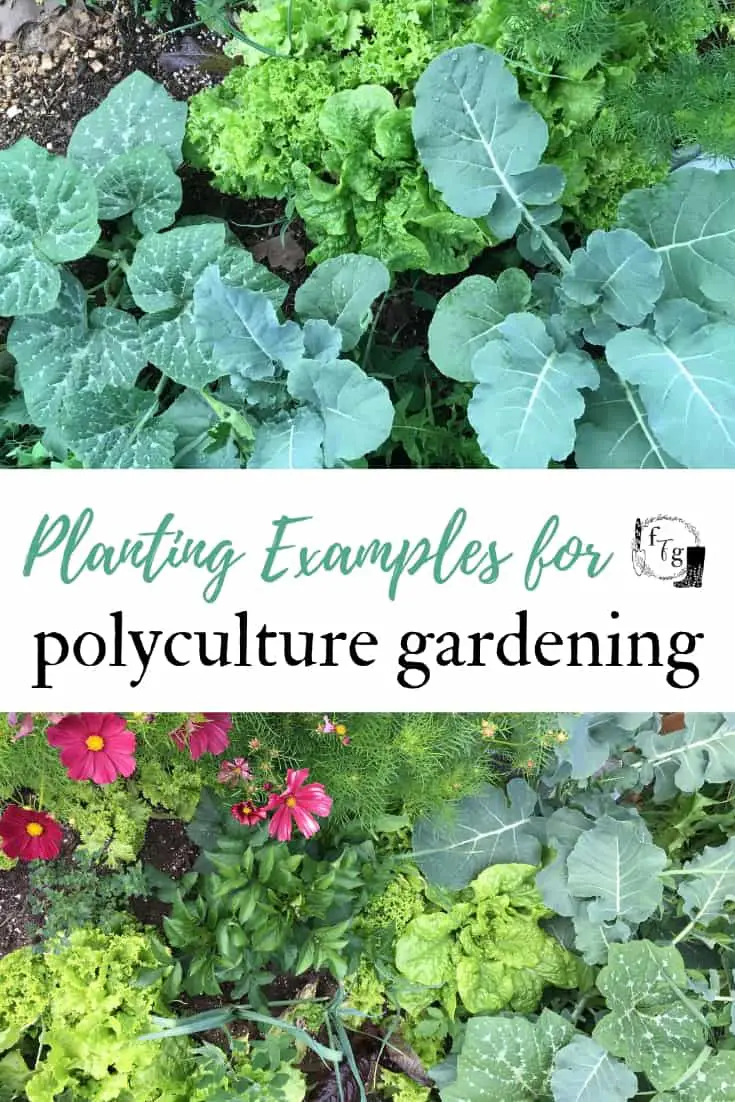
Polyculture Example #1
- Scatter lettuce, spinach, toy bok choi, and radish seeds.
- Plant some onion bulbs and transplant broccoli.
- Harvest baby greens & radishes within 3 weeks and thin them out to make space for larger head lettuce. Toy Bok Choi will bolt fast and is usually harvested in 30 days. I let a few go to flower to help the bees out as there are few flowers at this time.
- Harvest lettuce around broccoli transplants first to allow growing space. As you pull up more heads of lettuce transplant some fall cabbages in the empty spots.
- Sow green onions, swiss chard and carrots once the lettuce has bolted (gone to seed from the heat) for a fall crop.
Polyculture Example #2
- In the spring time direct seed mustard greens (giant red, komatsuna, mizuna), mache, arugula, lots of carrots and green onions.
- By early to mid- June transplant brussel sprouts (or broccoli if you prefer), leeks, scallions, swiss chard and beets once all the spring greens have bolted.
- In July harvest all the carrots which has now left space for the leeks, brussel sprouts and beets to grow. Where the carrots left large gaps direct seed lettuce and swiss chard, and scatter radish seeds.
- Enjoy your fall crops that are all frost hardy!
*A Note about Scattered Seeds*
Try to not clump them, and don't mix heavy and light seeds together. Scatter them but don't just 'throw' the seeds. It's a good idea to still try and distribute them somewhat evenly. If you end up with big empty areas that's not a problem! Just direct seed something new. Too clumped? Eat the micro greens!
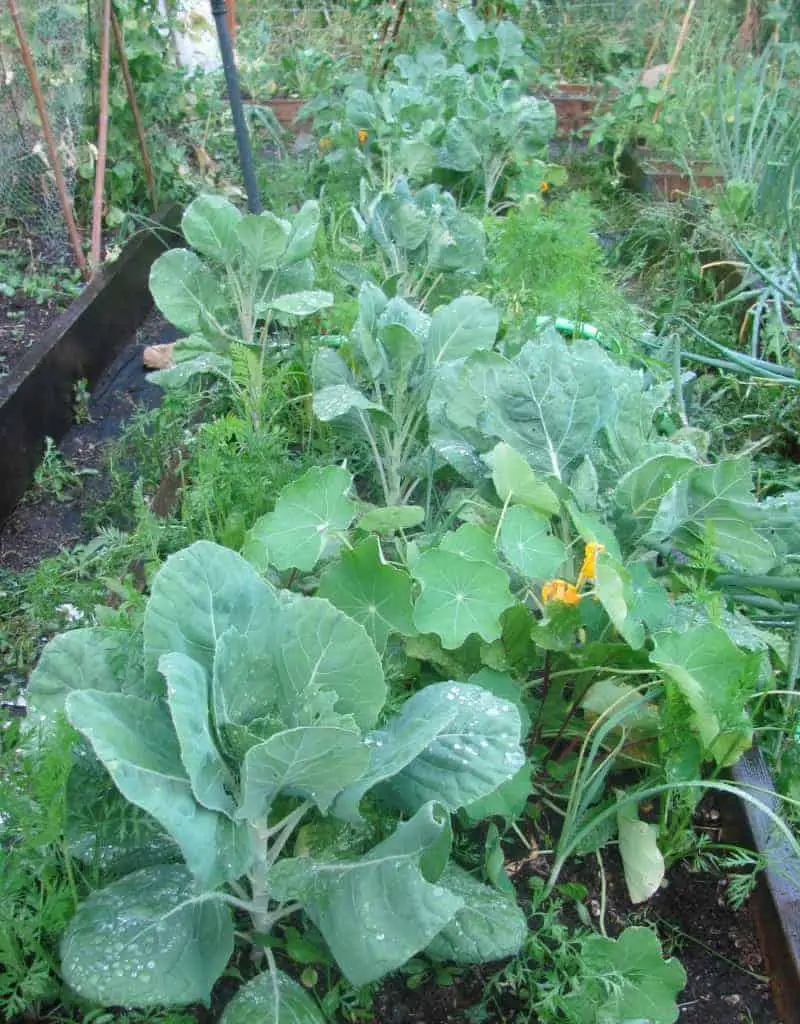
How to Create your own Polyculture Beds:
Mixing fast growing crops with some pest deterrence around your desired transplants (tomato, broccoli, cabbage etc) works best.
Fast Growing Vegetables:
Radishes, mesclun greens, lettuce, spinach, toy bok choi, mustard greens (giant red, mizuna, mibuna, osaka purple, komatsuna), orach (mountain spinach), arugula, baby swiss chard and baby turnips like hakurei.
Best Plants for Pest Deterrence:
Strong smelling herbs (oregano, basil, cilantro, parsley, sage etc) and alliums (leeks, onions, garlic, shallots). Attracting ladybugs via frilly leaves of celery, dill, parsley and carrots. Marigolds, nasturtiums, borage, and many other herbs and flowers work great. Learn more about companion planting here.
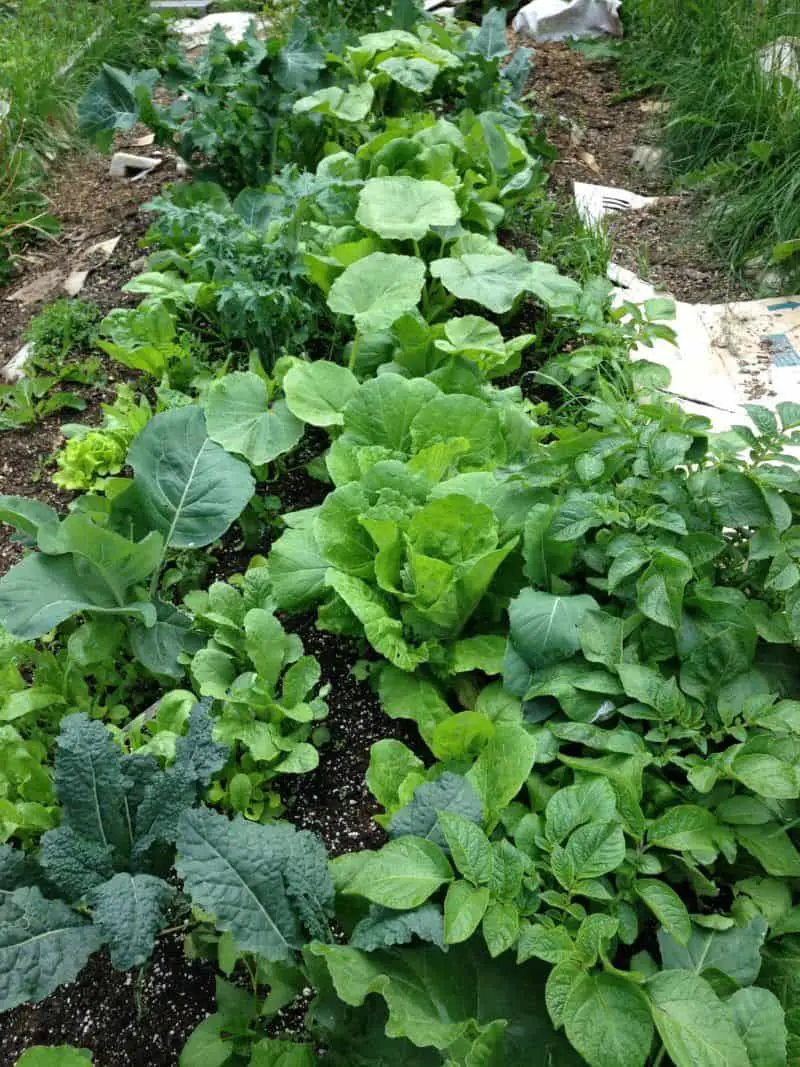
Is Polyculture for Everyone?
No, it definitely isn't. I personally enjoy the slightly chaotic and lack of uniform feel to polyculture beds and I have fun filling in crops where there is empty space but many gardeners still prefer neat tidy rows.
If you're a beginner it might be hard to tell the weeds from food (although there are many weeds you can eat!).
It also requires base experience with sowing multiple times in one growing season as once you harvest one crop you transplant or direct seed another in its place.
Better Yield? Yes or No?
I think that greatly depends on what you're growing and how good your soil is. I think polyculture works fantastic for spring greens, as you can harvest the micro greens, then baby leaf lettuce/greens, then harvest all the head lettuce and plant your next set of crops for a fall harvest. In this case it will offer a slightly higher yield than rows, however won't be much different than block planting except your growing more than one crop variety.

Will polyculture permaculture gardening work for you?
It depends on how you like to grow food. Many people prefer the look of growing in rows and the ease of weeding in-between the rows because you can see what's what.
I'm busy and lazy with weeding so I prefer to lift lettuce or carrots than weeds, and I like the chaotic look of polyculture beds.
In the end, you won't know until you experiment! I've found that many children's gardens are accidental polyculture beds because they scatter the seeds rather than making rows (at least younger children).
Have you grown polyculture permaculture gardening beds before?
Did you like them?

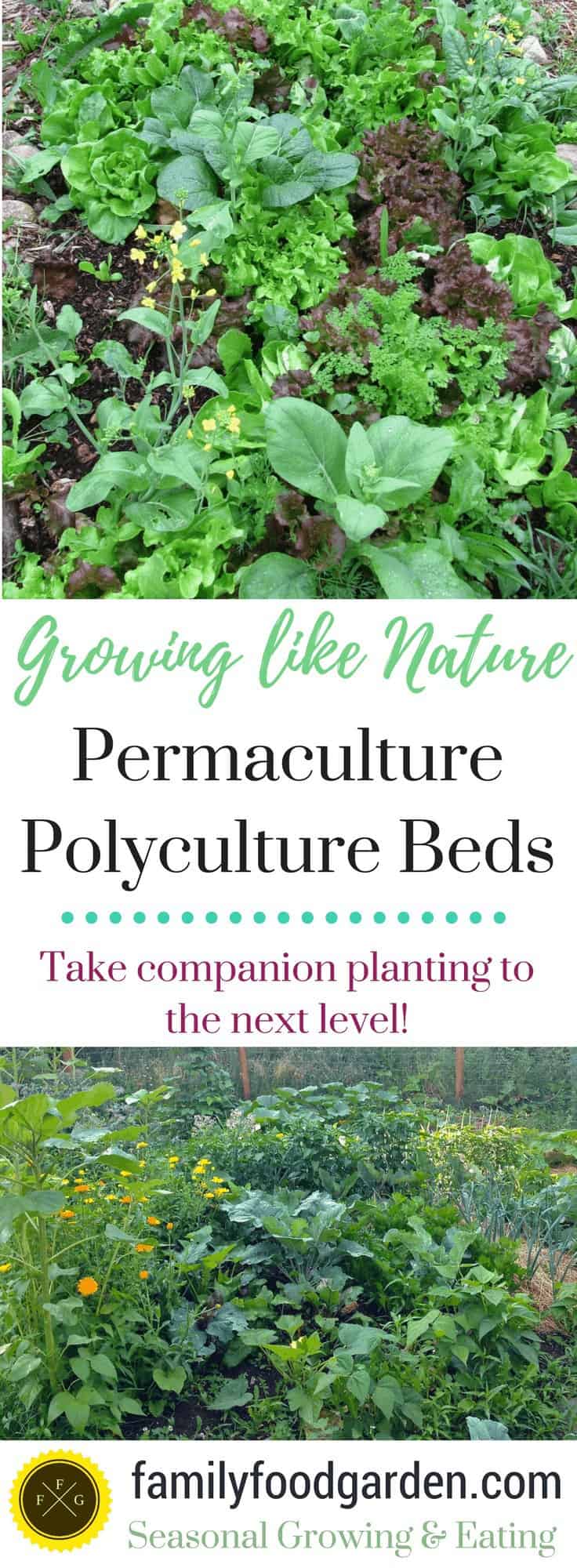
What Is Polyculture In Gardening
Source: https://www.familyfoodgarden.com/permaculture-what-is-polyculture/
Posted by: turpinbaxt1992.blogspot.com

0 Response to "What Is Polyculture In Gardening"
Post a Comment